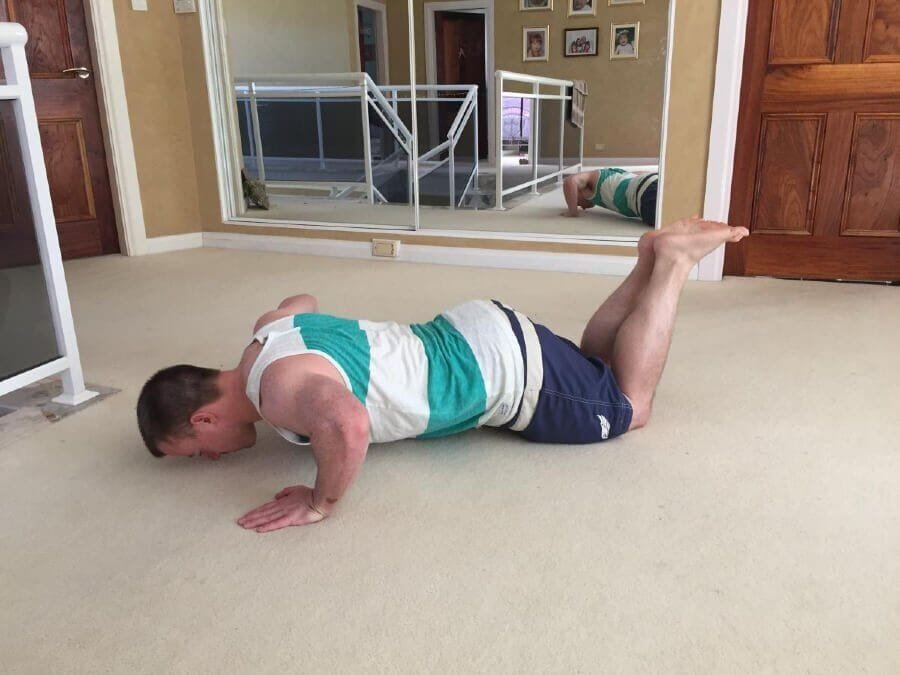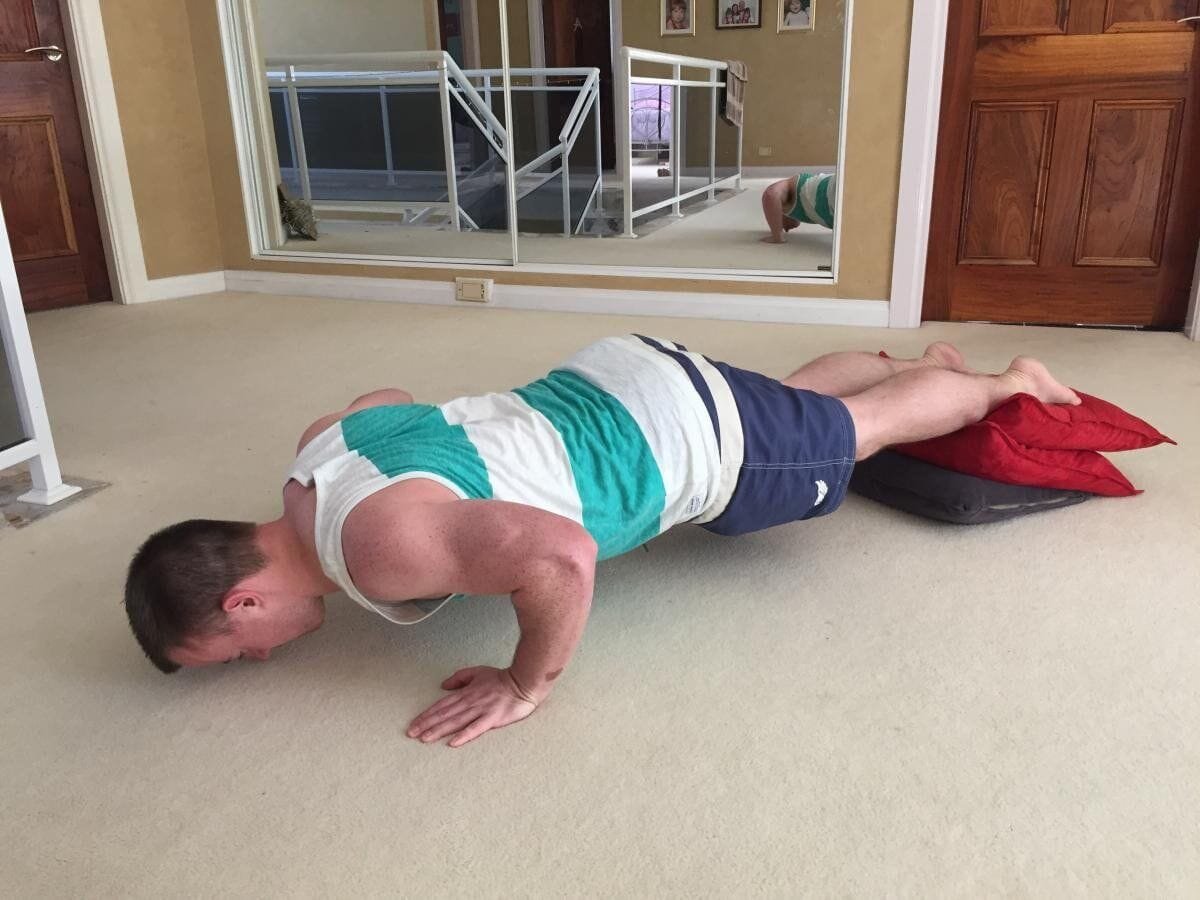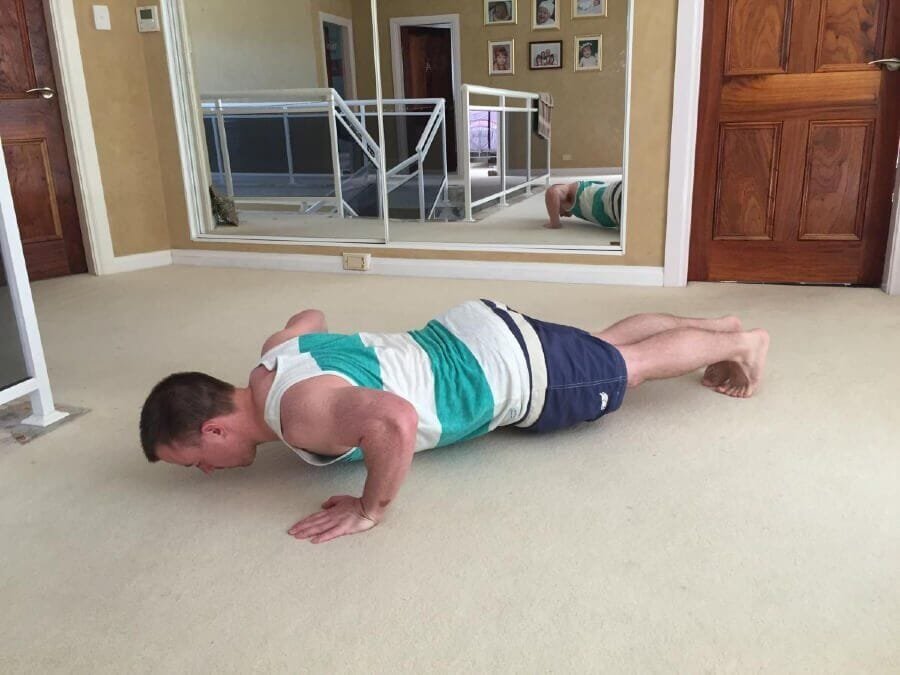Many techniques posted on Calisthenics 101 assume you’ve already got a solid framework and have perfected the basic form for many of the simpler exercises, but recently I’ve seen so much terrible push-up form that I wanted to dedicate a page solely to the basic push-up.
The greatest thing about push-ups is they are widely used in warm-up routines in all kinds of sports and training, but at the same time that’s their biggest vice; because in a Calisthenics class somebody would be quick to help correct bad form, but unfortunately in many other classes form seems to take a back step.
Table of Contents
3 Beginner Tips For Completing Push-Ups
Before going into any detail the first thing you want to do is make sure you follow these simple 3 tips:
- Always keep your legs and feet together with your weight balanced on your toes (at least for basic push-ups).
- Your body from your head through your torso and down to your feet should remain completely straight throughout the exercise if you’re aiming for perfect form. Don’t bend your legs, don’t curve your back, and certainly don’t push your bum into the air!
- A single rep should be starting with straight arms, lowering yourself down till your arms and elbows are at a 90 degree angle, then returning back to straight arms. Don’t cheat yourself by doing partial reps; a smaller number of full reps are much better than a larger number of partial reps.
Push-Up Variations and Progressions to Help Improve Your Push-Up
There are a few small things you can do to help those who are struggling or those who want to mix things up a little.
If you’re looking for something much harder then there’s another post for that, but in the meantime try mixing things up with the following:
Use your knees to assist if you are struggling
It should come as no surprise that like any other exercise there will be many people who struggle to take to it like a fish to water. No worries though, you can take a step back with this one and work on assisted push-ups by balancing your weight on your knees rather than your toes.
The idea here is that the ‘pivot distance’ is much less between your hands and your knees than it is your hands and your toes so your body-weight should be reduced.
Although this makes a push-up easier it’s also much more common to see people break form with this technique, so do remember to try and keep your back, bum and thighs as straight as possible!


If you find you can easily complete a set of 10 reps then you should certainly be ready to move onto a regular push-up.
Change up your push-up hand position
Your hands should usually be shoulder width apart and just below your shoulders, though adjusting your hands can be an easy way to move the intensity of the exercise between your triceps and your chest.
If you bring your hands closer together then your elbows will need to push back slightly which will put more focus on your triceps and ease the pressure on your chest.
If you move your hands wider apart then you’ll reduce the focus on your triceps and put a greater intensity on your chest.
Raise your hands or feet to make the push-up harder or easier
Rather than using a level floor you can make the technique harder or easier by resting your hands or feet on an object such as a chair, an exercise ball, a step, or anything in reach which is stable.
Think of your body like a pivot here; if you raise your feet then your hands will be lower down and you’ll find the push-up becomes harder. Oppositely if you raise your hands then you’ll find the push-up becomes easier.


Try playing around with different size objects to find the best challenge for yourself here.
If you can easily bang out a set of 10 reps then you should be looking for the next challenge! Why not try these 10 challenging push-up variations?

Founder of www.calisthenics-101.co.uk. Training calisthenics since 2012.
Currently working on: 30 second one-arm handstand, muscle-up 360, straddle planche.
